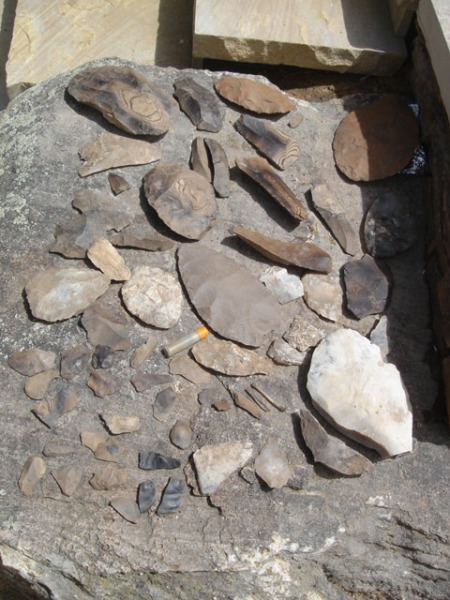This post continues a theme I have been following on one of the Desert Explorer web pages, Wilderness Kids. There I write about some of my experiences and thoughts regarding teaching my son about wilderness skills, and learning in general. I touch on topics such as experiential learning, establishing boundaries and safety, and the importance of nature in childrens’ lives.
The Four Year Old Archaeologist
If you ask my son what he wants to be when he grows up he may look at you with a bit of confusion. If you see him in his excavation unit, troweling away, screening dirt, or mapping, and ask him if wants to be an archaeologist when he grows up, he will tell you, “I am an archaeologist.” To him, there is only what he is enjoying at the moment, and practicing archaeology is one of his great enjoyments. Besides the philosophical premise of being in the moment, which I am doing my best to relate to him, I am also teaching him about archaeology. He already has a strong grasp of many of the scientific concepts including documentation and mapping, artifact collection, ethnographic studies and even experimental archaeology. He has been to many ruins, rock art panels, and has held real artifacts in his hands and seen the context in which they are found. He continues to absorb all the information I give him, and never stops asking for more.
Last summer we received a call from a friend who is an excavator and was working on a large landscaping project at the base of the foothills in Boulder. They had uncovered a cache of stone tools, debitage, and a few animal bones. We were invited up to take a look at the artifacts.They had already called Professor Doug Bamforth at the University of Colorado who specialises in plains archaeology and Paleoindian culture. He has since had the artifacts analysed and reported the conclusions- the Mahaffy Cache, named after the landowner, turned out to be Clovis-era, about 13,000 years old, and an extremely rare find. News of the cache made it into the New York Times, the Los Angeles Times, Fox news, and newspapers across the country. Initially the stone tools were thought to be ceremonial in nature based on their size and the spot of red ochre paint found on some of the larger pieces. But this theory seems to have been dropped based on the findings of a protein analysis which found extinct camel and horse protein on the artifacts. Some of the artifacts had been used for butchering. Both of these animals disappeared from the area around 13,000 years ago. For more information about the cache, and a video of the tools, visit the University of Colorado website.

Nicolai digging where the cache was found with a chert flake he has just uncovered.

One of the artifacts in my hand.
As soon as we arrived at the site Nicolai jumped down in the hole where the cache was found and he was handed a trowel. He immediately went to work. Although the people on site thought they had found all the artifacts, within minutes Nicolai managed to find another chert flake. He also uncovered a piece of burned wood, which we collected carefully and packaged in aluminum foil to be given to Professor Bamforth. He got to examine the cache and we have since listened to a radio interview with Professor Bamforth and the landowner.
We have discussed the cache, talked about the tools and their function, the reasons why the people might have left them, the climate and fauna of the Clovis era, and the geologic events that may have helped preserve the cache. While he may never formally study archaeology, or “become an archaeologist”, his interest in the science and the places it leads us, the doors it opens up for learning are more important than any university degree that may be won. With that I will continue promoting learning for the sake of learning and support my four year old archaeologist as long as he wants to be one. For more of my thoughts helping children learn, visit the Wilderness Kids pages at Desert Explorer.

This photo shows most of the artifacts found in the cache. The lip balm tube is for scale, it is about 2 1/2 inches in length.



 Posted by desertexplorer
Posted by desertexplorer 